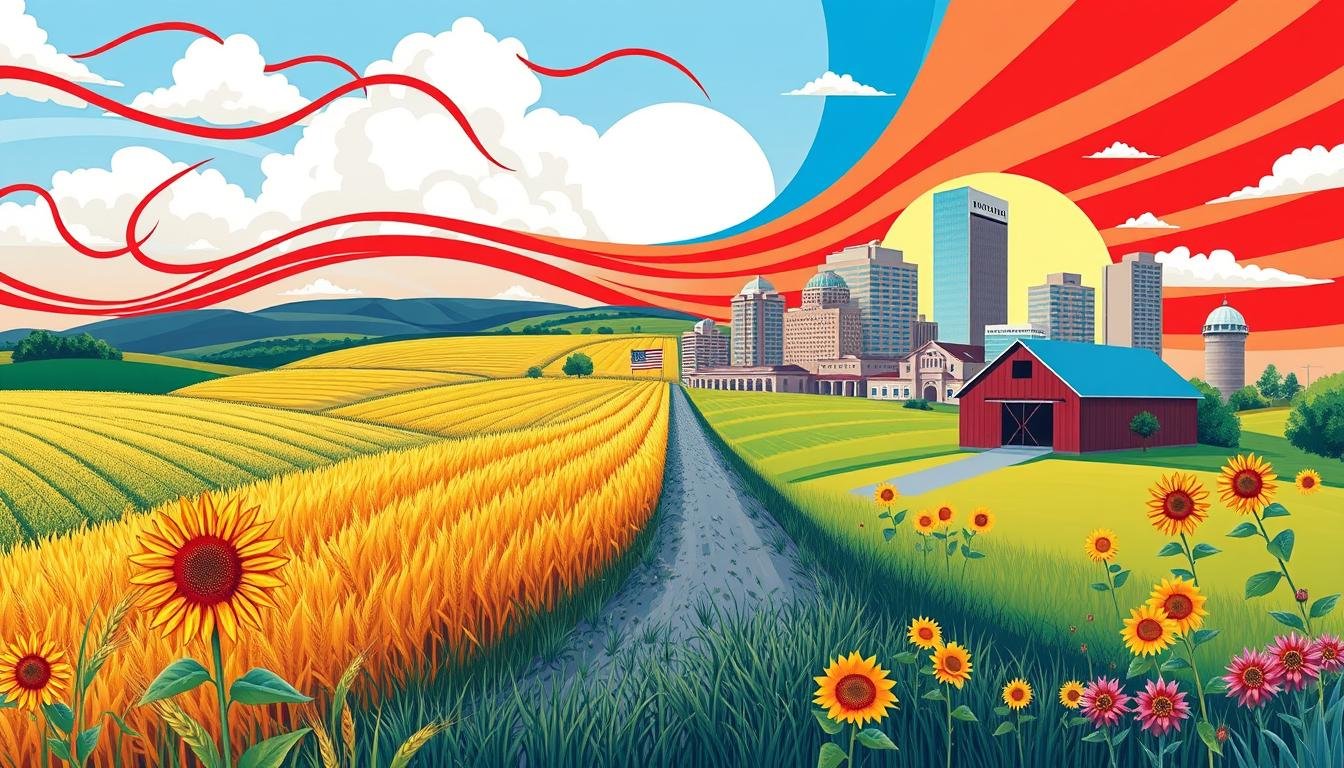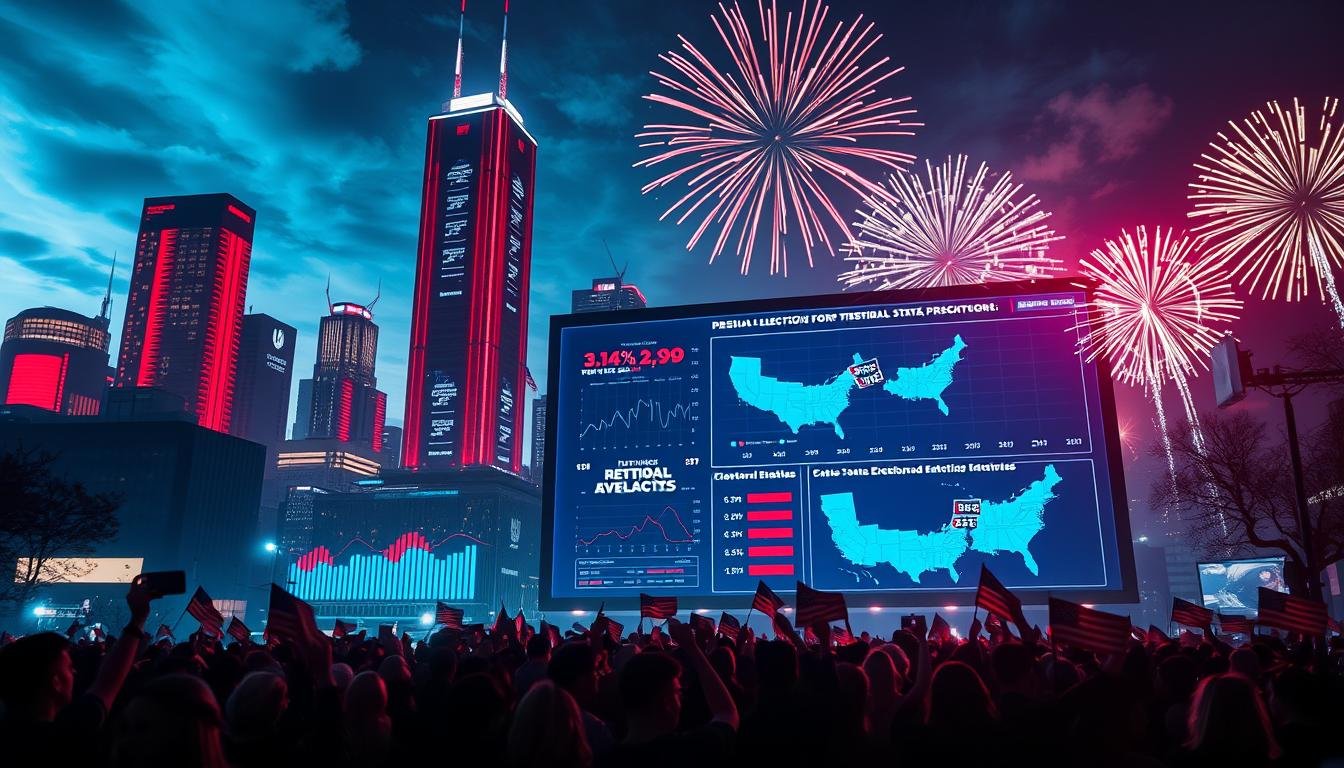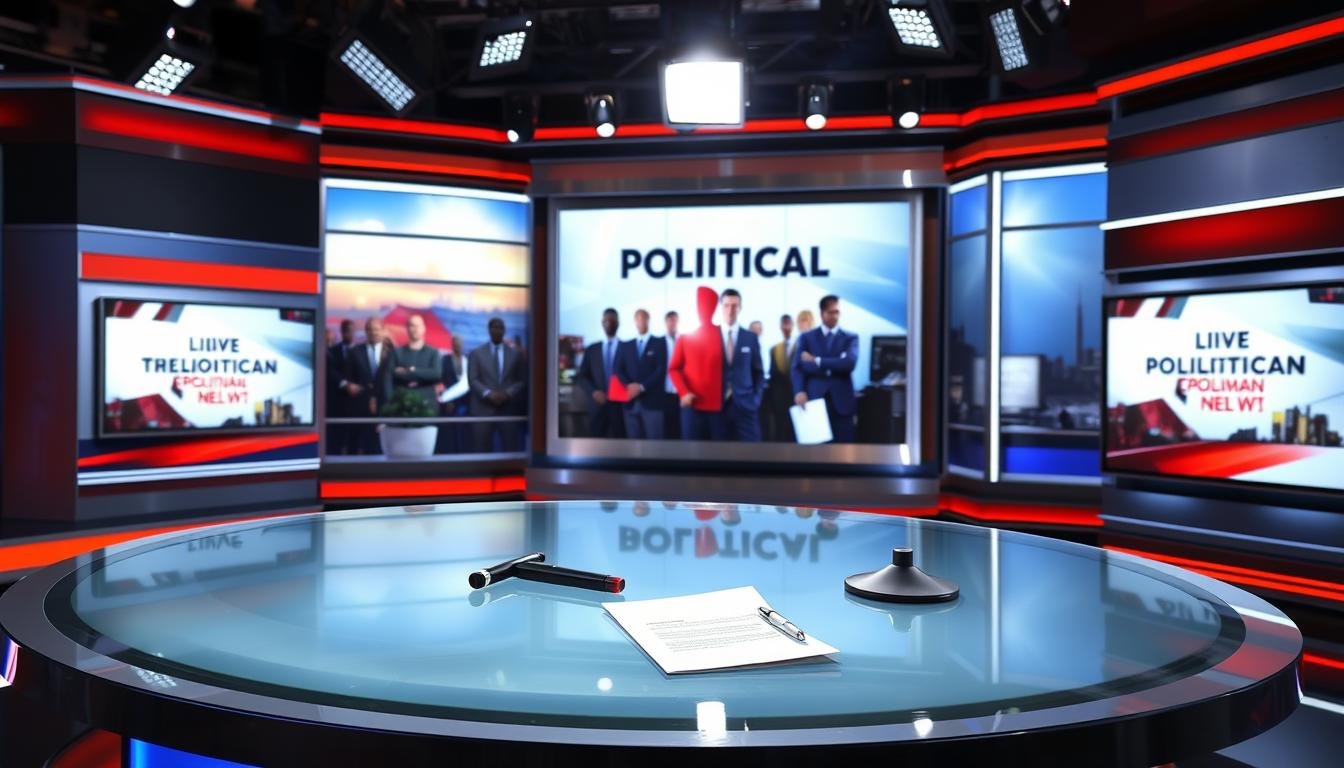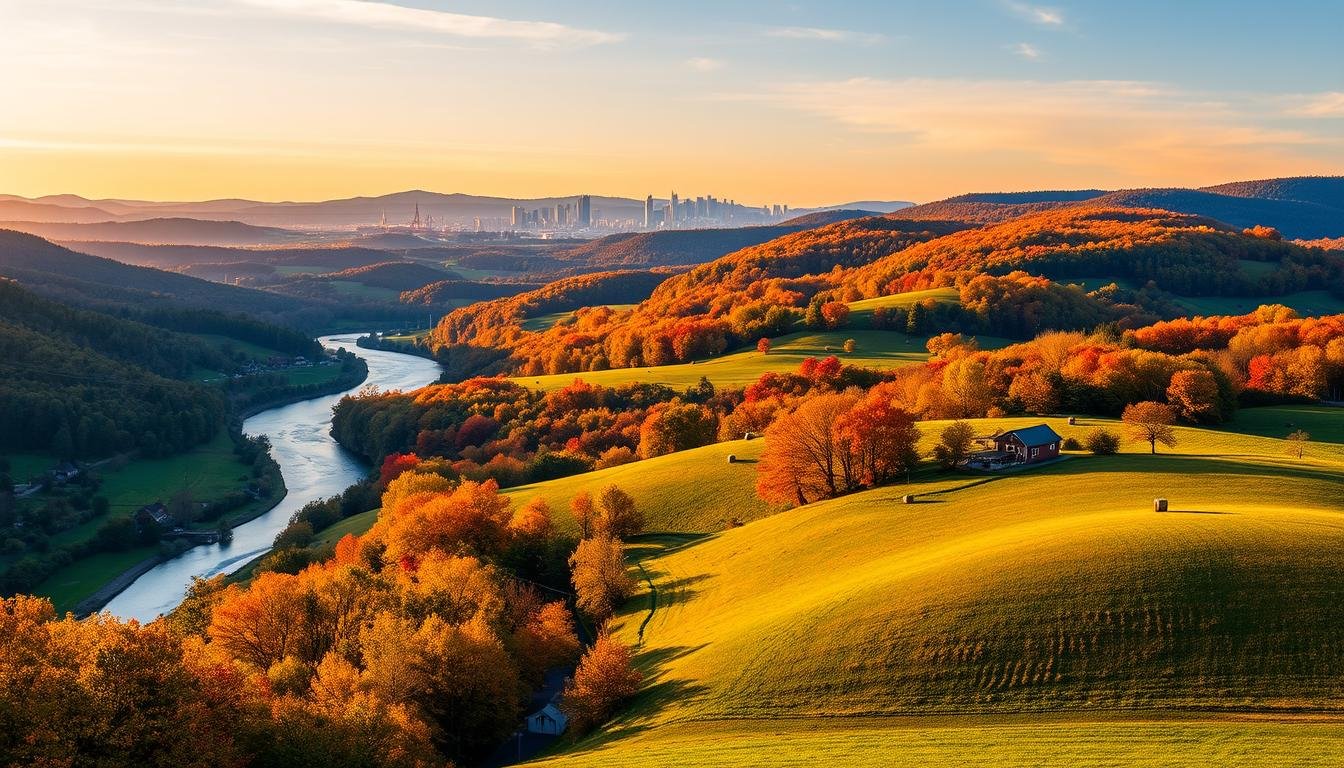Kansas is often seen as a Republican stronghold. Since 1968, it has voted for Republican candidates in presidential elections. Yet, the state’s politics are more complex, with cities leaning Democratic and rural areas sticking to Republicans.
In the 2020 presidential election, Donald Trump won Kansas with 56.2% of the vote. This shows the state’s long history of supporting Republicans. But, at the state level, Kansas has chosen Democratic governors, like current Governor Laura Kelly.
Kansas has 6 electoral votes, making it important in national politics. Whether it’s a swing state or a solid red state is up for debate. The state’s mix of urban and rural areas shows its political complexity.
Historical Voting Patterns in Kansas
Kansas has been a Republican stronghold since 1968. It has voted for GOP candidates in every election except one since 1940. This shows Kansas’ strong conservative leanings.
The state’s history as a free state during the Civil War era helped shape its Republican values. This history has made Kansas a key Republican state.
But Kansas’ politics are not just about Republicans. The state has also elected Democratic governors, like Laura Kelly in 2018 and 2022. This shows a shift in the state’s politics, with cities leaning Democratic and rural areas staying Republican.
The state’s voting patterns mirror national trends. Rural areas vote Republican, while cities vote Democratic. This is seen in Nebraska’s 1st Congressional District, which supports Republicans, and the 2nd District, which leans Democratic.
As the 2024 election nears, Kansas’ politics will likely change. Both parties will fight for the state’s votes and seats. The balance between city and rural votes will be key to Kansas’ future.
Is Kansas Red or Blue: Current Political Landscape
Kansas is seen as a red state in national elections. But, its politics at the state level are more complex. In the 2020 presidential election, Donald Trump won Kansas with 56.2% of the vote. Joe Biden got 41.5%.
The state legislature is mostly Republican, with supermajorities in both chambers. But, Kansas has a Democratic governor, Laura Kelly. She was re-elected in 2022.
The state’s urban areas, like Kansas City and Lawrence, vote more Democratic. Rural areas, on the other hand, are strongly Republican. Even though Kansas votes Republican in presidential elections, it’s not seen as a swing state because of its strong partisan divide.
| Key Insights | 2020 Election Results |
|---|---|
| Kansas is a midwest politics battleground with a partisan divide. | Trump: 56.2%, Biden: 41.5% |
| The state’s urban areas lean Democratic, while rural regions remain strongly Republican. | – |
| Kansas is not considered a electoral college swing state due to its consistent Republican voting in presidential elections. | – |
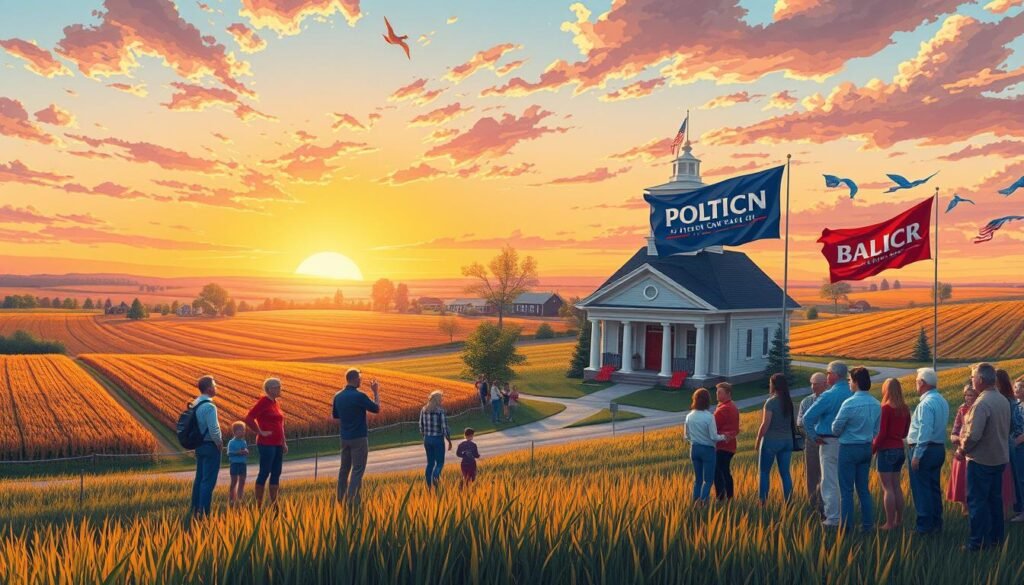
Conclusion
While Kansas is generally considered a red state, its politics are more complex. It has voted Republican in presidential elections since 1968. Yet, it has also chosen Democratic governors in recent years.
Kansas shows the trends in Midwest politics, with growing divides between cities and rural areas. These changes are affecting how people vote. The state’s 6 electoral votes have gone to Republicans in recent elections. But, state politics are more varied.
To understand Kansas’s politics, we must look at its history and current factors. These include demographics and the economy. As the country’s politics change, Kansas’s role will be key in shaping the future.
The partisan divide in Kansas mirrors the Midwest’s complex mix of regional, economic, and cultural factors. It’s not just a simple red state. A closer look at Kansas’s politics helps us grasp its role in Midwest politics.

